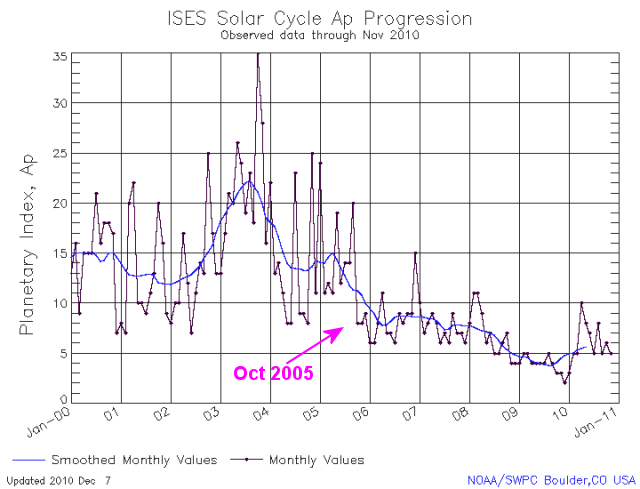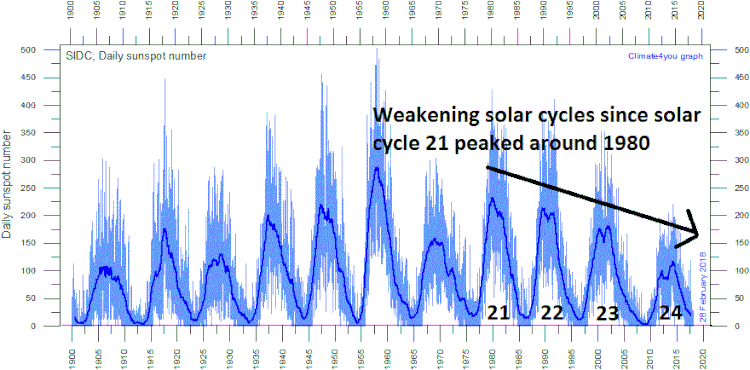Our sun has been void of sunspots for more than half of the year, prompting scientists to warn that the Earth could be in for a huge cold spell.
Website Space Weather says: “The sun is spotless again. For the 133rd day this year, the face of the sun is blank.
“To find a year with fewer sunspots, you have to go back to 2009 when the sun was experiencing the deepest solar minimum in a century.
“Solar minimum has returned, bringing extra cosmic rays, long-lasting holes in the sun’s atmosphere, and strangely pink auroras.”
The sun follows cycles of roughly 11 years where it reaches a solar maximum and then a solar minimum.
During a solar maximum, the sun gives off more heat and is littered with sunspots. Less heat in a solar minimum is due to a decrease in magnetic waves.
The sun was not expected to head into a solar minimum until around 2020, but it appears to be heading in early which could prove to be bad news.
The last time there was a prolonged solar minimum, it led to a ‘mini ice-age’, scientifically known as the Maunder minimum – which lasted for 70 years.
The sun’s magnetic activity went into a sharp fall beginning around October 2005 with solar cycle 24 being the lowest in over 100 years. Some scientists warn that a new grand solar minimum is looming and the upcoming cycle 25, which begins in 2019, will have even lower cycles after it.
All indications are that the upcoming solar minimum which is expected to begin in 2019 may be even quieter than the last one which was the deepest in nearly a century. One of the natural impacts of decreasing solar activity is the weakening of the ambient solar wind and its magnetic field which, in turn, allows more and more cosmic rays to penetrate the solar system. The intensification of cosmic rays can have important consequences on such things as Earth’s cloud cover and climate, the safety of our astronauts exploring in space, and lightning.
Daily observations of the number of sunspots since 1 January 1900 according to Solar Influences Data Analysis Center (SIDC). The thin blue line indicates the daily sunspot number, while the dark blue line indicates the running annual average. The recent low sunspot activity is clearly reflected in the recent low values for the total solar irradiance. Data source: WDC-SILSO, Royal Observatory of Belgium, Brussels. Last day shown: 28 February 2018. Last diagram update: 1 March 2018.
Source: Express, Perspecta Weather, Earth-syst-dynam.net
Image: Joy Ng/NASA’s GSFC/SDO



And of course, this is our fault.